So many people I meet in the course of my job tell me how they wish they’d known how to socialise their dog when it was a puppy because they realise now that their dog’s reactivity to dogs, over excitement when guests come over and anxiety in new situations could all have been prevented if they’d only known how to socialise their puppy.
Often people don’t even know that they should be socialising their puppy, in fact this is a mistake I made with my very first puppy years ago. This usually results in a very nervous and shy dog who doesn’t cope well with life.
But, when you know better, you do better, so this post is all about HOW to do better so that you can know you’re raising your dog to be calm and polite like you want it to be. Go here for personalised help to train your puppy to be the dog you dream of owning.
Putting a New Perspective on Socialisation
First of all, let’s clarify the frequently misleading idea of what socialisation should look like…
The frequently misleading Definition of Socialisation:
“Exposure of a young puppy to a variety of people, animals, and situations to minimize fear and aggression and promote friendliness.”
Following this definition usually results in a puppy who displays the very behavioural struggles the method seeks to prevent. Without being extremely sensitive to what is going on in your puppy’s brain while you’re exposing them to things, you can easily end up giving them negative associations with those things, or over stimulated reactions to those things, without even knowing you did it.
My Explanation of Socialisation:
“Exposure to a variety of people, animals, situations and novel objects in association with food rewards and focus on you.
The puppy learns that life is NOT about interacting with every person or dog it sees.
They learn that the world can go on around them and it doesn’t always require a response from them. IT’S NONE OF THEIR BUSINESS!”
Instead of promoting your puppy’s engaging with every dog and human they see, you need to help them to stay calm and relaxed and disengaged from those things.
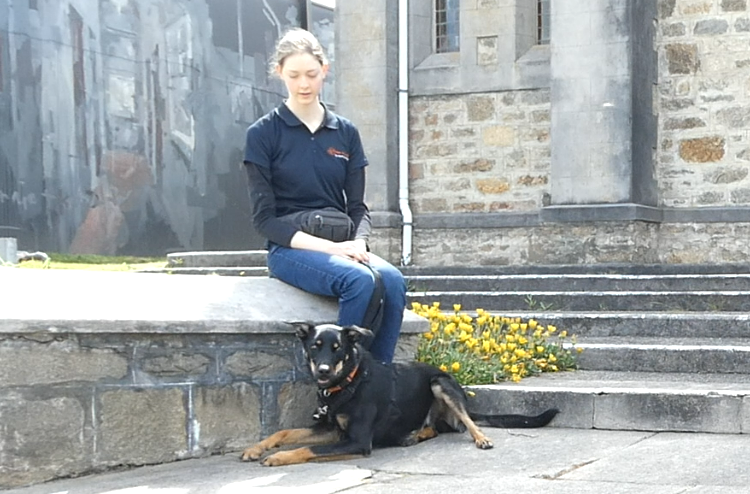
How Can You Do That?
Here are three things to do (there are many, many more, but we’ve only got time for three) when you are exposing your puppy to new sights, sounds and smells outside of your home.
Firstly, if you go to an area where you can train them around all the exciting experiences, find somewhere where you can settle down without being right in the thick of those experiences.
Busy locations I like are Middleton Beach (the grassed area), Albany Town Square (between the Library and Town Hall), Bunnings and Chester Pass Mall parking area.
ALWAYS keep them on lead so that you have full control over their safety.
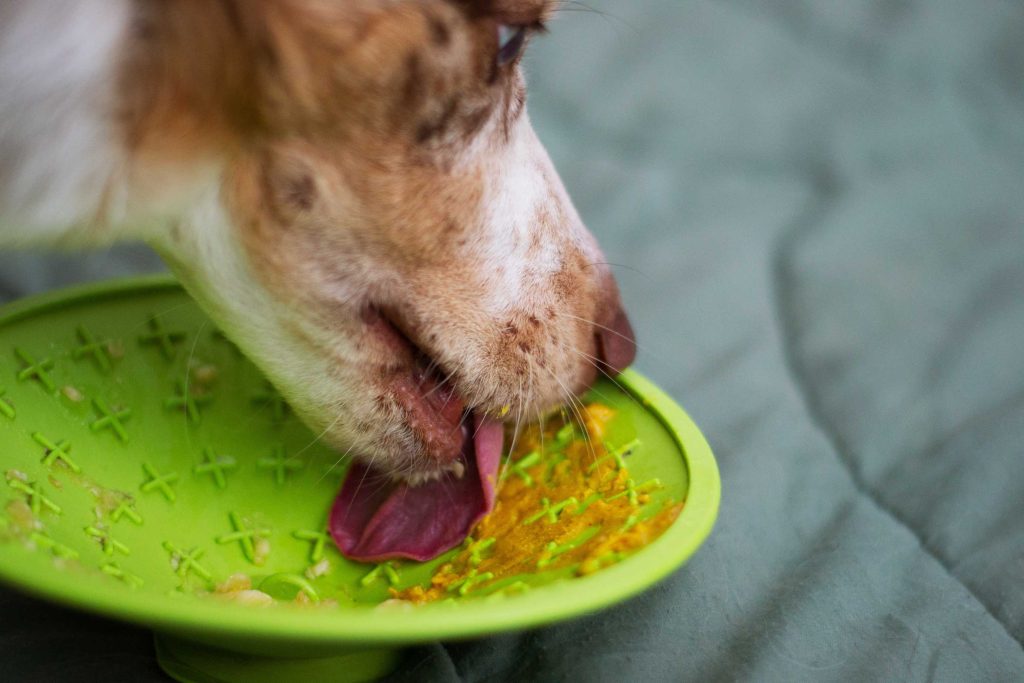
Practising Calmness:
- Take some of their daily food with you and some treats. Smear some food on a lick mat or sprinkle their kibble in a snuffle mat.
- When you get out of the car, make sure your mat is all ready to go, then get your puppy out of the car and carry them (if they’re small enough) to an appropriate spot.
- A good spot would be somewhere where you can watch what’s going on in the environment without being right in the middle of the action.
- Put their lick/snuffle mat down and encourage them to get the food.
- Alternatively, you can simply park your car somewhere busy and sit inside with your puppy in their crate or in the back and give them a nice pig’s ear to chew on or Kong, while you check your phone.
What you have just done, is let your puppy practise calmness in an environment which they would otherwise choose to be manic in. They are also getting a positive association to that environment – food!
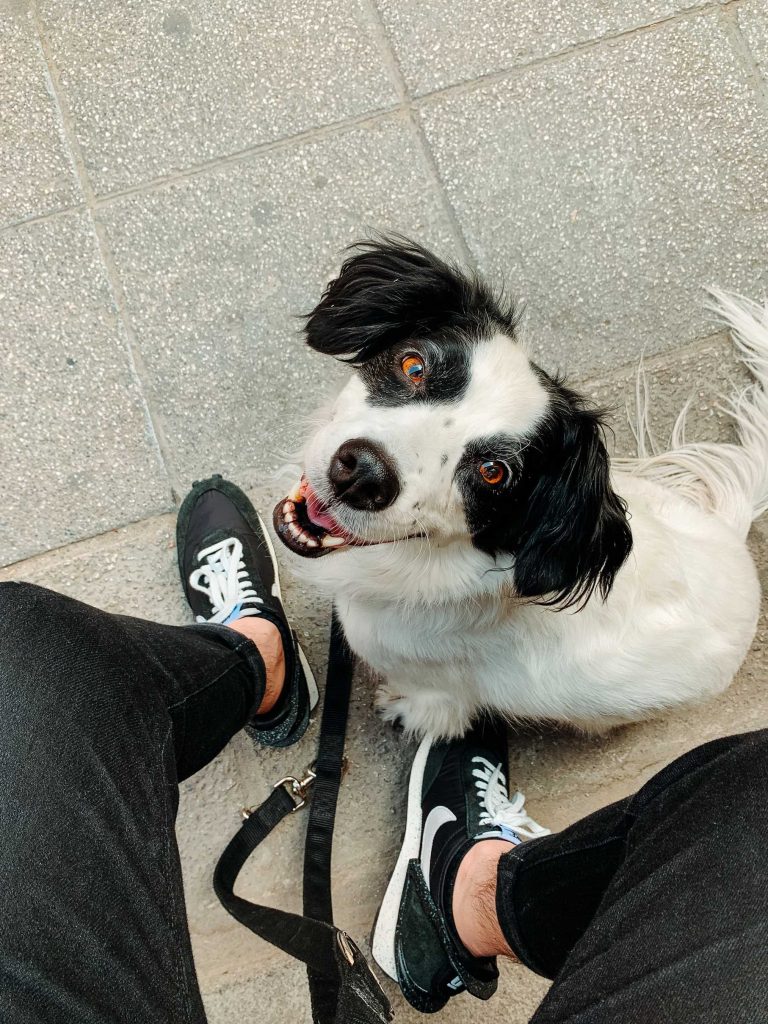
Practising Focus on YOU:
- Before even walking away from your car on arriving somewhere, just spend time with your puppy right around your car.
- Play games like chasing treats in a small space around the car or teach new high energy tricks like Middle, Catch or Spin.
- If someone walks past, reward your puppy for staying close to you and engaging in any way with you.
- If someone comes up and wants to pat your dog, explain that you’re training them and either say “No” because you feel it’s pushing it right now, or “Yes” and follow the next step…
…Load one of your hands full of treats/kibble and let the person pat your puppy while they are feeding from your hand.
– If your pup shows any sign of ducking away, say “ok we’re going to stop for a minute” and bring your puppy close to you while still feeding.
– If they get all squirmy with excitement, stay slow with your body movements and tone of voice.
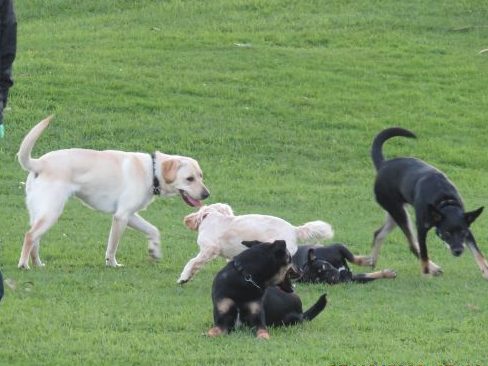
Playing With Other Dogs:
If you know anyone with a puppy, by all means book a play date! If you know anyone with a puppy friendly adult dog, it would be great to get a play session between them. Puppies learn a lot about how to interact appropriately by playing with adult dogs.
HOWEVER be very aware that playing with other dogs can quickly become SO much fun for a new puppy that they will want to start meeting every single dog they see on walks or passing your house.
Also be aware that not all puppies play the same way, so try and get play dates with pups with similar play styles as your puppy.
So don’t just let the dogs loose to play while you have a nice chat with your friend. You want to follow the guide below to avoid creating an obsession with play in your dog.
Keep play SHORT: 2-5 minute bursts of play are plenty.
Train as you go:
- When you see a slight pause in the play, call both dogs to you. The odds are that this may not work straight away, so do what it takes to get them to come. (Crouch low to the floor and make squeaky noises, lie on you back and whistle – basically be as exciting and interesting as possible.)
- When the dogs come, you’re going to hang onto one dog each and give them a bit of food and maybe pats if they like that. Then you’re going to say “Go play” and release your hold and let them go into the play session again.
- Repeat this once or twice, then next time you call and the dogs come, you’re going to put both dogs on a lead and take them into separate areas. One inside, one outside, into different rooms or whatever is easiest.
- Give each dog a nice chew to gnaw on and leave them to it. This will calm them down and give you time to have a cup of coffee and a chat.
- You can either take them out for another little play session afterwards, or leave it at that.
What this structure does, is get your puppy used to you being involved when another dog is around. SO many dogs totally forget about their owners when they see another dog in the distance because they’re just used to being free to go straight in and meet that dog.
That’s not safe for your dog (or you) and only feeds their obsession with play and excitement.
That’s it for today. I hope it helps you to have an amazing journey with your new dog! When you’re ready for more guidance, call me on 0402 543 682, or message me here.

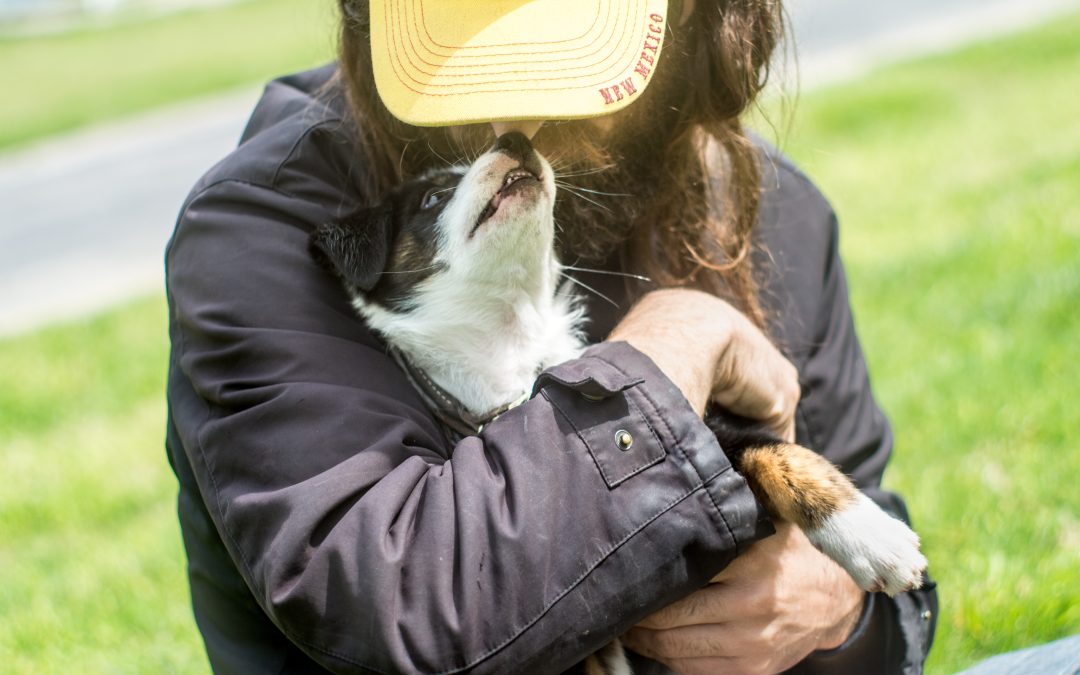
So with Cruz I can never tell if he is going to be ok with q new dog, he has lots of friends, but if they’re yapping he tends to get reactive, what can I do to make him feel safe?
Hey! I would definitely not bother approaching or forcing an interaction with another dog who is barking. However, you can certainly teach your dog to ignore that other barking dog. The best way is to carry food on you and if you see ANY dog in the distance, begin treating your dog for observing that other dog and not reacting. Over time, experiment with getting closer to the other dog and you will soon have built up Cruz’s trust of other dogs. He is also learning that there isn’t pressure to say hello. If a dog does bark, he will be in a mind space to listen to you: turn around and walk away, create distance and pass them by at that further distance, create distance and then settle somewhere and watch that dog walk by while Cruz gets to chase food, catch food, do any tricks he knows or anything else that will keep him positive and engaged with you.